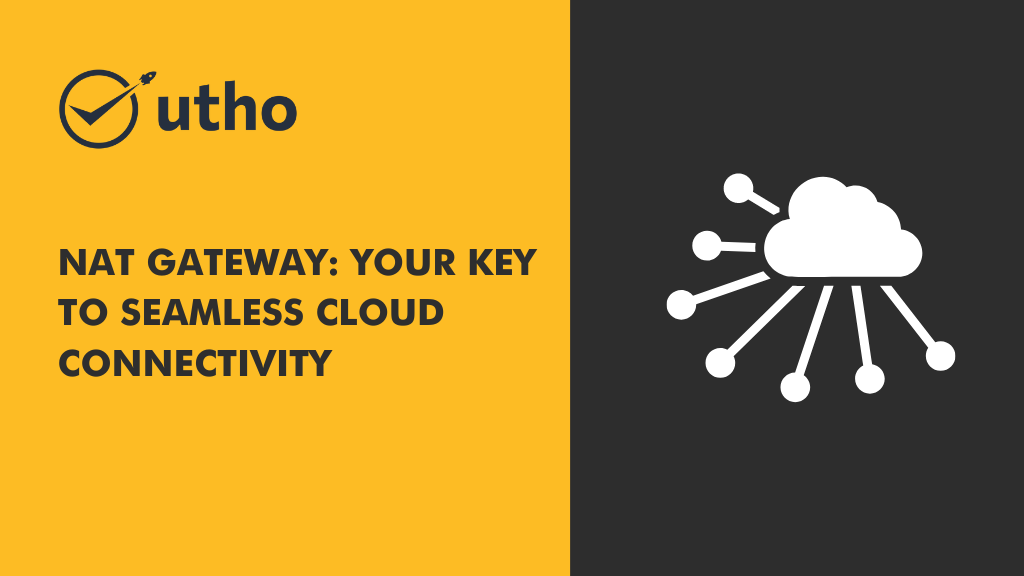In the world of cloud computing, ensuring smooth and uninterrupted connectivity is crucial. NAT Gateway plays a vital role in achieving this by seamlessly connecting your cloud resources to the internet while maintaining security and privacy. Join us as we explore the ins and outs of NAT Gateway and how it enhances your cloud networking experience.
What does Cloud NAT entail?
Cloud NAT, or Network Address Translation, is a service provided by cloud computing platforms like Google Cloud Platform. It enables virtual machine instances without external IP addresses to access the internet, as well as providing a means for instances with external IP addresses to communicate with those without.
In simpler terms, Cloud NAT allows virtual machines (VMs) in a cloud environment to connect to the internet or other resources outside of their network, even if they don't have their own unique public IP address. Instead, Cloud NAT assigns a single public IP address to multiple VM instances within a private network, translating their internal IP addresses to the public one when accessing external services. This helps with security and efficiency by reducing the number of publicly exposed IP addresses while still allowing for internet connectivity.
What are the primary benefits of using a NAT Gateway in cloud networking architectures?
Using a NAT (Network Address Translation) Gateway in cloud networking architectures offers several key benefits:
Enhanced Security: NAT Gateway acts as a barrier between your private subnet and the internet, hiding the actual IP addresses of your resources. This adds a layer of security by preventing direct access to your internal network.
Simplified Network Management: It simplifies outbound internet connectivity by providing a single point for managing traffic from multiple instances in a private subnet. You don't need to assign public IP addresses to each instance, reducing management overhead.
Cost-Effectiveness: NAT Gateway allows you to consolidate outbound traffic through a single IP address, which can be more cost-effective than assigning public IP addresses to each instance. This can result in savings, especially in scenarios with multiple instances requiring internet access.
Scalability: NAT Gateway can handle high volumes of outbound traffic and automatically scales to accommodate increased demand without intervention. This scalability ensures that your network remains responsive even during peak usage periods.
Improved Performance: By offloading the task of address translation to a dedicated service, NAT Gateway can improve network performance and reduce latency compared to performing NAT functions on individual instances.
Overall, integrating a NAT Gateway into your cloud networking architecture enhances security, simplifies management, reduces costs, and improves scalability and performance, making it a valuable component for cloud-based infrastructure.
What are some real-world examples or use cases that illustrate the significance of NAT Gateway in contemporary cloud networking configurations?
Real-world examples and use cases showcasing the importance of Network Address Translation Gateway in modern cloud networking setups include:
Secure Internet Access: In a cloud environment hosting web applications, a NAT Gateway can ensure secure outbound internet access for instances in private subnets. This prevents direct exposure of internal resources to the internet while allowing them to access necessary external services, such as software updates or API endpoints.
Multi-tier Applications: For multi-tier applications where different components reside in separate subnets (e.g., web servers in a public subnet and database servers in a private subnet), a NAT Gateway facilitates communication between these tiers while maintaining security. The web servers can access the internet via the NAT Gateway for updates or third-party services without exposing the database servers to external threats.
Hybrid Cloud Connectivity: Organizations with hybrid cloud architectures, where on-premises resources are integrated with cloud infrastructure, often use NAT Gateway to enable outbound internet connectivity for cloud-based resources while ensuring communication with on-premises systems remains secure.
Managed Services Access: When utilizing managed services like AWS Lambda or Amazon S3 from instances in a private subnet, a NAT Gateway allows these instances to access the internet for invoking serverless functions, storing data, or retrieving configuration information without exposing them directly to the public internet.
Compliance and Regulatory Requirements: In industries with strict compliance or regulatory requirements, such as healthcare or finance, NAT Gateway helps maintain security and compliance by controlling outbound traffic and providing a centralized point for monitoring and auditing network activity.
These examples highlight how NAT Gateway plays a crucial role in facilitating secure, controlled, and compliant communication between resources in cloud networking environments, making it an essential component of modern cloud architectures.
How does combining NAT Gateway with services like load balancers or firewall rules bolster network resilience and security?
Integrating NAT Gateway with other cloud networking services, such as load balancers or firewall rules, enhances overall network resilience and security through several mechanisms:
Load Balancers: NAT Gateway can be integrated with load balancers to distribute incoming traffic across multiple instances in a private subnet. This integration ensures that inbound requests are evenly distributed while maintaining the security of internal resources by hiding their IP addresses. In the event of instance failure, the load balancer automatically routes traffic to healthy instances, improving application availability and resilience.
Firewall Rules: By incorporating NAT Gateway with firewall rules, organizations can enforce fine-grained access controls and security policies for outbound traffic. Firewall rules can be configured to restrict outbound communication to authorized destinations, preventing unauthorized access and mitigating the risk of data exfiltration or malicious activity. Additionally, logging and monitoring capabilities provided by firewall rules enhance visibility into outbound traffic patterns, facilitating threat detection and incident response.
Network Segmentation: NAT Gateway integration with network segmentation strategies, such as Virtual Private Cloud (VPC) peering or transit gateway, enables organizations to create isolated network segments with controlled communication pathways. This segmentation enhances security by limiting lateral movement of threats and reducing the attack surface. NAT Gateway serves as a gateway between segmented networks, enforcing access controls and ensuring secure communication between authorized endpoints.
VPN and Direct Connect: NAT Gateway can be utilized in conjunction with VPN (Virtual Private Network) or Direct Connect services to establish secure, encrypted connections between on-premises infrastructure and cloud resources. This integration extends the organization's network perimeter to the cloud while maintaining data confidentiality and integrity. NAT Gateway facilitates outbound internet access for VPN or Direct Connect connections, allowing on-premises resources to securely access cloud-based services and applications.
Overall, the integration of NAT Gateway with other cloud networking services strengthens network resilience and security by providing centralized control, granular access controls, and secure communication pathways for inbound and outbound traffic. This comprehensive approach ensures that organizations can effectively protect their infrastructure and data assets in the cloud environment.
How does the cost structure for utilizing a NAT Gateway compare across different cloud service providers, and what factors influence these costs?
The cost structure for using a NAT Gateway varies across different cloud service providers and is influenced by several factors:
Usage Rates: Cloud providers typically charge based on the amount of data processed or bandwidth utilized by the NAT Gateway. This can vary depending on the region, with different rates for inbound and outbound data transfer.
Instance Type: Some cloud providers offer different instance types for NAT Gateway, each with varying performance characteristics and associated costs. Choosing the appropriate instance type based on your workload requirements can impact the overall cost.
Data Transfer Pricing: In addition to NAT Gateway usage rates, data transfer pricing for transferring data between the NAT Gateway and other cloud resources, such as instances or external services, may apply. Understanding the data transfer pricing structure is essential for accurately estimating costs.
High Availability Configuration: Deploying NAT Gateway in a high availability configuration across multiple availability zones may incur additional costs. Cloud providers may charge for redundant resources or data transfer between availability zones.
Data Processing Fees: Some cloud providers impose data processing fees for certain types of network traffic, such as processing NAT Gateway logs or performing network address translation operations.
Discounts and Savings Plans: Cloud providers often offer discounts or savings plans for long-term commitments or predictable usage patterns. Taking advantage of these discounts can help reduce the overall cost of utilizing Network Address Translation Gateway.
Comparing the cost structures of NAT Gateway across different cloud service providers involves evaluating these factors and determining which provider offers the most cost-effective solution based on your specific requirements and usage patterns.
How does Utho Cloud improve network connectivity and security for businesses in the cloud with its NAT Gateway services?
Utho Cloud effectively facilitates NAT Gateway services to optimize network connectivity and enhance security for businesses operating in the cloud environment through the following mechanisms:
Secure Outbound Connectivity: Utho Cloud's NAT Gateway service allows businesses to securely connect their private subnets to the internet without exposing their internal IP addresses. This ensures that outbound traffic from resources in private subnets remains secure and private.
Centralized Management: The NAT Gateway service in Utho Cloud provides a centralized point for managing outbound traffic from multiple instances in private subnets. This simplifies network management tasks and allows administrators to configure and monitor NAT Gateway settings easily.
Scalability: Utho Cloud's NAT Gateway service is designed to scale automatically to handle increasing levels of outbound traffic. This ensures that businesses can maintain consistent network performance and responsiveness even during periods of high demand.
High Availability: Utho Cloud offers NAT Gateway services with built-in redundancy and fault tolerance across multiple availability domains. This ensures high availability for outbound internet connectivity and minimizes the risk of downtime due to hardware or network failures.
Integration with Security Services: Utho Cloud's NAT Gateway service can be integrated with other security services, such as Utho Cloud Firewall and Network Security Groups, to enforce access controls and security policies for outbound traffic. This helps businesses enhance their overall security posture in the cloud environment.
Overall, Utho Cloud's NAT Gateway services provide businesses with a secure, scalable, and easy-to-manage solution for optimizing network connectivity and enhancing security in the cloud environment.
Network Address Translation is a crucial tool for building secure and efficient networks. Utho's solutions include advanced NAT features that improve connectivity, security, and resource management in the cloud. This helps businesses make the most of cloud resources while keeping everything safe and private.
Understanding NAT and its different forms is essential for network admins and IT professionals. It's used for letting private networks access the internet, connecting different parts of a network, and managing IP addresses efficiently. In today's networking world, NAT plays a big role in keeping things running smoothly and securely.




